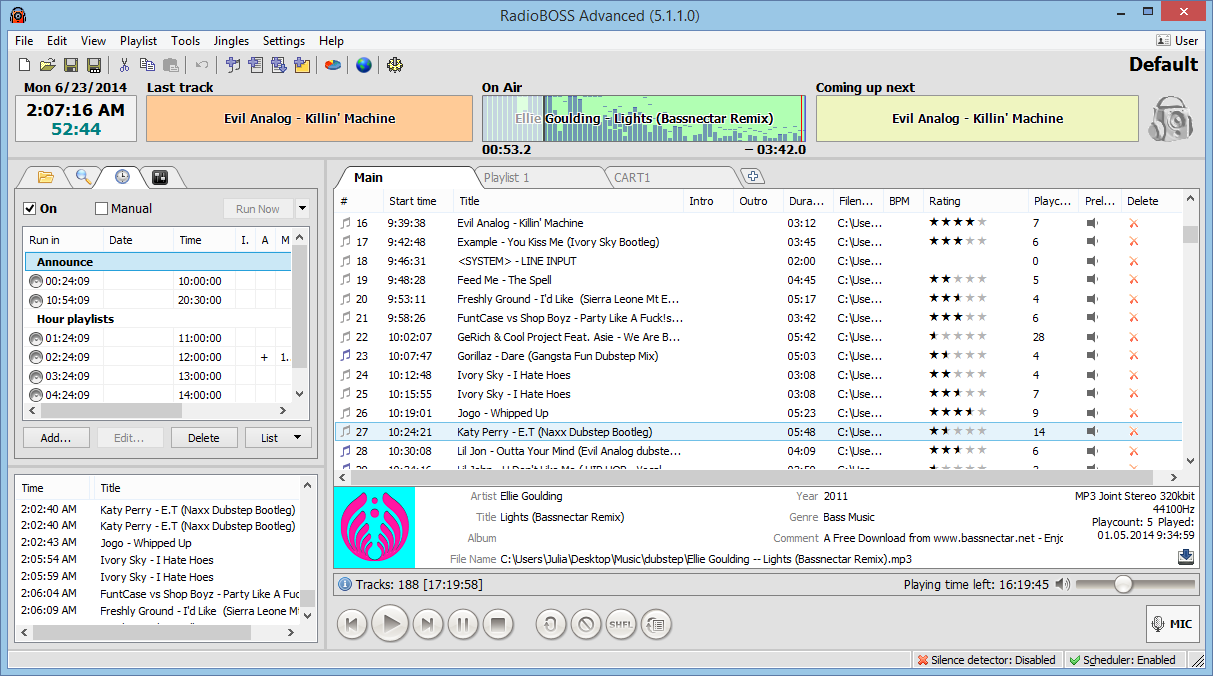

Javascript is the obvious choice for automating tasks in a web browser. More information on Puppeteer can be found on the npm package manager: Conclusionīrowser automation can be used to increase efficiency of repetitive tasks online. artdeco-button-primary') Ĭonfirmations.forEach((cBtn) => ) Let confirmations = document.querySelectorAll('.artdeco-modal_actionbar.

Let btns = document.querySelectorAll('.search-result_actions. We can do a search for the company and then automate the adding of connections with a script. Let’s say I have just joined a new company and want to add all my new colleagues as connections on Linkedin. An Example Automating LinkedIn Connections Time to move on to a more useful example. Expand your automation capabilities across desktop, web, and mobile with Power Automate apps. Quickly process forms using document automation, process approvals, detect images and text, or create with prebuilt models.
WEB BASED RADIO AUTOMATION CODE
We have clicked a button using Javascript code in the developer console. Make your automation even smarter with AI Builder. document.getElementById('my-button').click() Ĭopy and paste this into the console and hit enter. Now let’s execute the code from earlier to click the button. So now we know the ID we can switch between the “Elements” and the “Console” using the top menu. An example id attribute for the h2 heading tag Right click on the button and go to “inspect”, this will bring up the element inspector where we should be able to see the HTML for the button. So we can see here the button has a id of my-button but in most cases we wouldn’t have the HTML laid out so we need to find that reference. You can click it manually to start with and then let’s try clicking it programmatically from the dev console. So let’s start with a simple button on this page that we want to click. This is where we will be executing our Javascript. Type in 2+2 and hit enter, you should get a result of 4 pop up in the console log. Try opening up a developer console right now in your web browser. Now to find out what the class and ID’s are for different social networks and to execute this code we are going to be using a developer console which is part of every web browser. We then loop through these with the forEach command and use the. The first line creates an array of all the elements on the page with the class “like-button”. How about if we wanted to click on every like button on the page… const likeButtons = document.querySelectorAll('.like-button') In the above example we use document.getElementById to reference an element by it’s ID. document.getElementById('like-post-124').click() Now let’s look at some javascript code to click a like button. If we wanted to click a single element we would generally use the ID, if we wanted to click every like button on the page then we would use a class reference. The opening tag includes a class reference and a more specific ID. In the example above word “Like” is encapsulated between a opening and closing button tag. I’m going to assume no prior knowledge in this article and will go over the basics that you’ll need to know to create simple scripts.įirst let’s look at how HTML is structured with an example of a like button. Collating data from web sources into reports.Checking revenues across affiliate networks.Connecting and following social media accounts.Liking social media posts for specific niches.If we assume it takes between 5 and 30 mins to create a basic browser automation script then anything you spend more than an hour a year doing should be automated. Things like this can and often should be automated using simple browser automation to save you time and effort. It does not store any personal data.Have you ever found yourself carrying out the same monotonous task repeatedly on a website? Click here, then here, confirm, click here then here confirm. The cookie is set by the GDPR Cookie Consent plugin and is used to store whether or not user has consented to the use of cookies. The cookie is used to store the user consent for the cookies in the category "Performance". This cookie is set by GDPR Cookie Consent plugin. The cookies is used to store the user consent for the cookies in the category "Necessary". The cookie is used to store the user consent for the cookies in the category "Other. The cookie is set by GDPR cookie consent to record the user consent for the cookies in the category "Functional". The cookie is used to store the user consent for the cookies in the category "Analytics". These cookies ensure basic functionalities and security features of the website, anonymously. Necessary cookies are absolutely essential for the website to function properly.


 0 kommentar(er)
0 kommentar(er)
